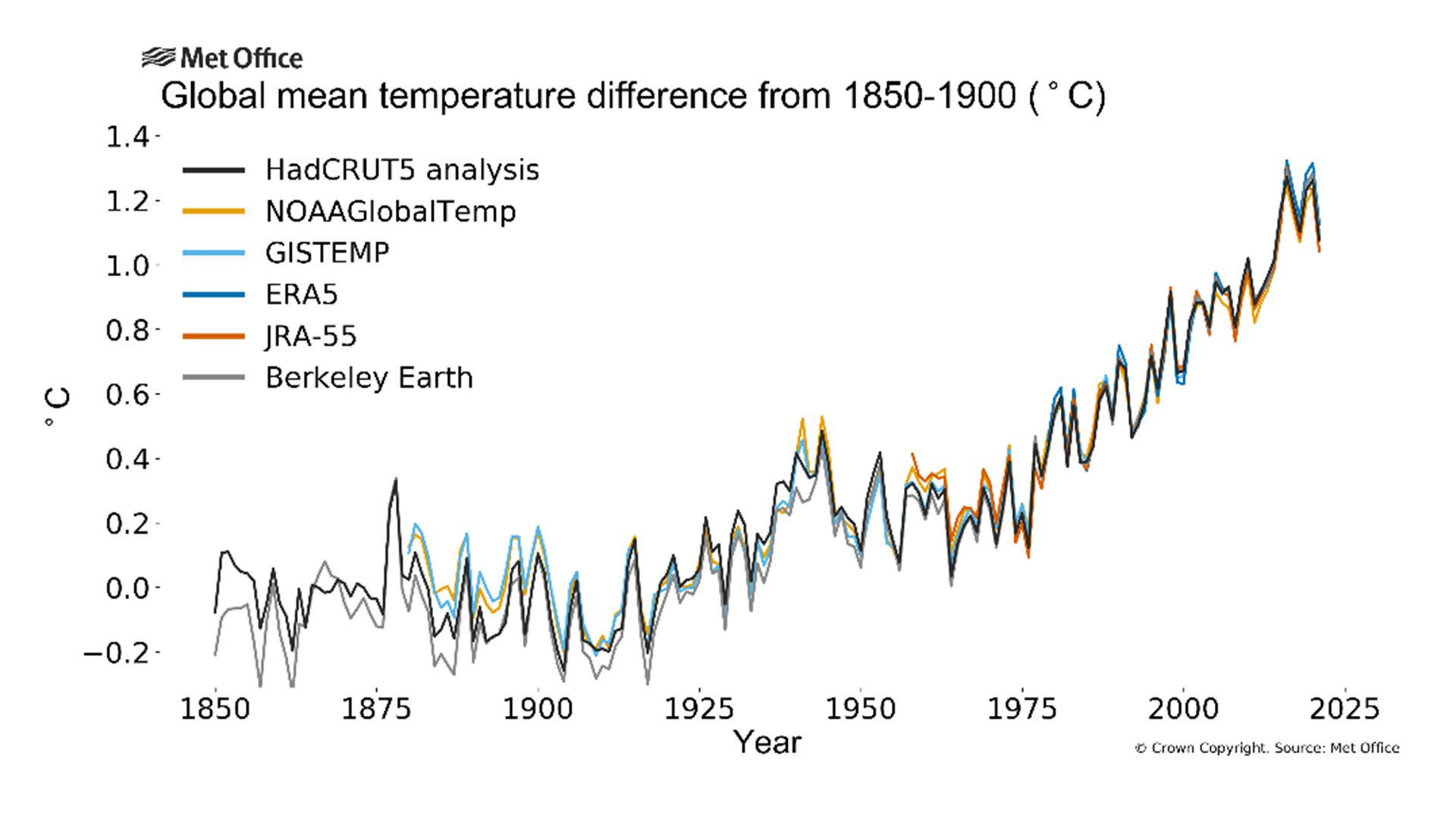According to the World Meteorological Organization’s (WMO) annual “State of the Global Climate” report, Earth’s oceans reached their hottest, most acidic, and highest sea levels on record in 2021. These concerning records mark another clear sign that human activities are causing planetary changes on land, in the ocean, and in the atmosphere, as per the report.
Temperature
The oceans’ hot temperatures can be partly attributed to the rising greenhouse gas emissions and temperatures across the globe. The average global temperature in 2021 was 1.11 degrees Celsius (33.998 degrees Fahrenheit) above the pre-industrial average. Since bodies of water absorb about 90 percent of the Earth’s accumulated heat, the oceans have rapidly warmed in the past 20 years.
In fact, most of the Earth’s oceans experienced at least a “strong” Marine Heat Wave at some point in 2021. These heat waves, along with the high average temperature, can critically damage marine ecosystems and populations such as coral reefs, seagrass meadows, kelp forests, and fish.

In a statement released in May 2022, WMO’s Secretary-General Petteri Taalas warned that “The heat trapped by human-induced greenhouse gasses will warm the planet for many generations to come.”
Acidity
WMO also confirmed that the pH levels in Earth’s oceans reached their lowest point in at least 26,000 years. The ocean absorbs around 23 percent of the annual emissions of anthropogenic carbon dioxide into the atmosphere, acting as a buffer. However, when oceans grow more acidic, their capacity to absorb carbon dioxide from the atmosphere declines. This carbon dioxide reacts with seawater, causes ocean acidification, and threatens organisms and ecosystem services.
Furthermore, as our oceans acidify, a new study found that the population of one of the world’s biggest oxygen producers will drastically decrease. These producers, called diatoms, are a plankton group that composes 40 percent of the ocean’s photosynthetic biomass. They are one of the reasons that oceans absorb a lot of the excess carbon dioxide that humans produce. However, the more the ocean’s acidity grows, the harder it is for diatoms to survive.
Sea Levels
The average sea level height has risen 1.8 inches in the last decade, rising an average of 4.5 mm between 2013 to 2021. This increase is more than double what it was from 1993 to 2002, and a great deal of the rise is attributed to the melting ice sheets.

The rising sea levels put hundreds of millions of people who live near coasts at risk of more intense and frequent storms and floods. For example, the above picture shows the flooding over a four-meter wall in Indonesia built to prevent seawater from coming into the inner land. Thanks to sea level rise, Jakarta, Indonesia is one of the fastest sinking cities in the world.
As Taalas noted in the report, “Sea level rise, ocean heat, and acidification will continue for hundreds of years unless means to remove carbon from the atmosphere are invented. Some glaciers have reached the point of no return and this will have long-term repercussions in a world in which more than 2 billion people already experience water stress.”




